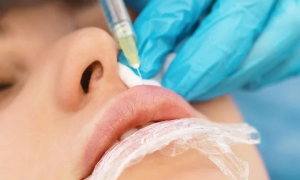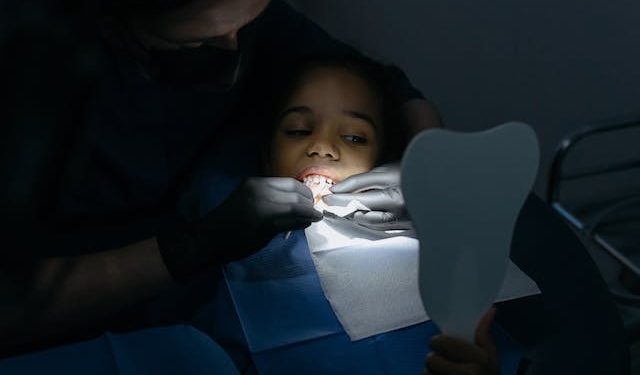Lip Enhancement, a cosmetic procedure aimed at altering lip size or shape, has surged in popularity. This trend, driven by societal influences and a desire for fuller lips, encompasses various techniques, from injections to surgical enhancements.
Social media and celebrity culture significantly contribute to the widespread appeal, portraying plump, well-defined lips as a symbol of beauty.
As the demand for this procedure escalates, understanding the basics of lip enhancement and its recovery process becomes crucial for those considering or undergoing this transformative cosmetic treatment.

The Basic Things You Should Know About Lip Enhancement Recovery
Lip enhancement procedures, whether through injections or surgeries, necessitate a recovery period essential for optimal healing and results. Understanding the recovery process is crucial for individuals considering or undergoing such enhancements.
Understanding the basic elements of Lip Enhancement recovery provides individuals with realistic expectations and helps them prepare for the post-procedure phase.It’s imperative to prioritize proper care, follow medical advice diligently, and allow the body the necessary time to heal for optimal results.
- Why Is Recovery Needed?
Following lip enhancement, the body needs time to heal from the procedure. Injections or surgical techniques cause trauma to the lips, leading to swelling, bruising, and potential discomfort.
Recovery allows the body to repair tissue damage, reduce swelling, and adapt to the alterations made during the procedure. It’s essential for minimizing complications and achieving the desired outcome.
- Duration of Recovery
The duration of recovery varies depending on the type of enhancement performed and individual healing abilities.
Generally, immediate effects like swelling and bruising subside within a few days to a week. However, complete recovery and the final result may take several weeks as the tissues settle, and any residual swelling diminishes.
- Initial Phase (First Few Days)
Immediately after the procedure, it’s common to experience swelling, bruising, and potential discomfort.
Applying ice packs or prescribed medications can help manage these symptoms. Activities like eating, talking, and smiling might be mildly uncomfortable during this initial phase.
- Subsequent Weeks
The initial swelling gradually subsides in the following weeks, allowing the treated area to settle. Some residual swelling may persist, but it diminishes significantly over time.
During this phase, it's crucial to follow post-procedure instructions provided by the practitioner to support proper healing and ensure the best results.
- Factors Influencing Recovery
Several factors can impact the recovery process. Individual healing abilities, the extent of the procedure, and adherence to post-procedure care instructions play crucial roles. Smoking, alcohol consumption, and certain medications can also affect healing and prolong recovery.
- Importance of Patience
Patience is key during lip enhancement recovery. While immediate results might be visible, the outcome becomes apparent once the swelling has completely subsided. Rushing the recovery process can lead to complications and unsatisfactory results.
- Consultation and Follow-ups
Regular follow-up appointments with the practitioner are vital during the recovery phase. These visits allow for monitoring progress, addressing any concerns, and receiving guidance on proper care to optimize the healing process.
Tips for a Lip Enhancement Recovery
A successful recovery from lip enhancement procedures is crucial for optimal results and minimal complications. Implementing specific strategies and diligently following post-procedure care instructions can significantly aid healing.
- Follow Post-Procedure Instructions
Adhere strictly to the guidelines provided by your practitioner. This may include instructions on applying ice packs, taking prescribed medications, and avoiding certain activities or products that could hinder healing.
- Manage Swelling and Discomfort
Apply ice packs or cold compresses as recommended to reduce swelling and alleviate discomfort during the initial phase. Additionally, keeping your head elevated while resting can help minimize swelling.
- Avoid Strenuous Activities
Refrain from engaging in strenuous exercises or activities that could strain the lips or increase blood flow to the treated area. Give your lips ample time to heal without added stress.
- Maintain Proper Oral Hygiene
Ensure good oral hygiene, but avoid excessive movement or pressure on the lips while brushing or flossing. Gentle care is essential to prevent irritation or disruption to the treated area.
- Stick to Soft Foods
In the initial days after the procedure, opt for soft foods that require minimal chewing to prevent unnecessary movement of the lips. This helps reduce discomfort and supports the healing process.
- Stay Hydrated
Drink plenty of water to stay hydrated. This aids in our body’s healing process. Moreover, you should avoid alcohol and caffeine at any cost. They can dehydrate the body and lips, potentially interfering with your recovery.
- Limit Sun Exposure
Protect your lips from excessive sun exposure, as they may be more sensitive post-procedure. Use a lip balm with SPF and avoid prolonged sun exposure to prevent complications.
- Avoid Smoking
Smoking can impede the healing process and increase the risk of complications. It’s advisable to refrain from smoking during the recovery period to promote optimal healing.
- Patience is Key
Be patient and realistic about the recovery timeline. While initial swelling and bruising may resolve within days, complete healing and the final result may take several weeks. Rushing the process can hinder your chances of optimal outcomes.
- Attend Follow-Up Appointments
Attend scheduled follow-up appointments with your practitioner to monitor progress, address any concerns, and receive guidance on optimizing the healing process. Your follow-up appointments may also require you to go through any further treatment or enhancement to ease your recovery. So do not skip the visits.
- Communicate with Your Practitioner
If you experience any unexpected or concerning symptoms during recovery, promptly communicate with your practitioner. Early intervention can prevent potential complications. They will also be able to guide you better in case there is any complications or emergency.
- Mental and Emotional Support
Acknowledge that the recovery phase might include emotional aspects. If needed, seek support from friends, family, or a therapist to navigate any emotional challenges during this period.
Implementing these tips and diligently following post-procedure instructions can significantly contribute to a smooth and successful lip enhancement recovery. Prioritizing proper care and allowing adequate time for healing are fundamental for achieving the desired results.
Conclusion
So these were the basics of lip enhancement recovery and the tips you should practice and follow. You can flaunt your lips once you are out of the recovery phase. Meanwhile, be patient and listen to your doctor's advice.
























